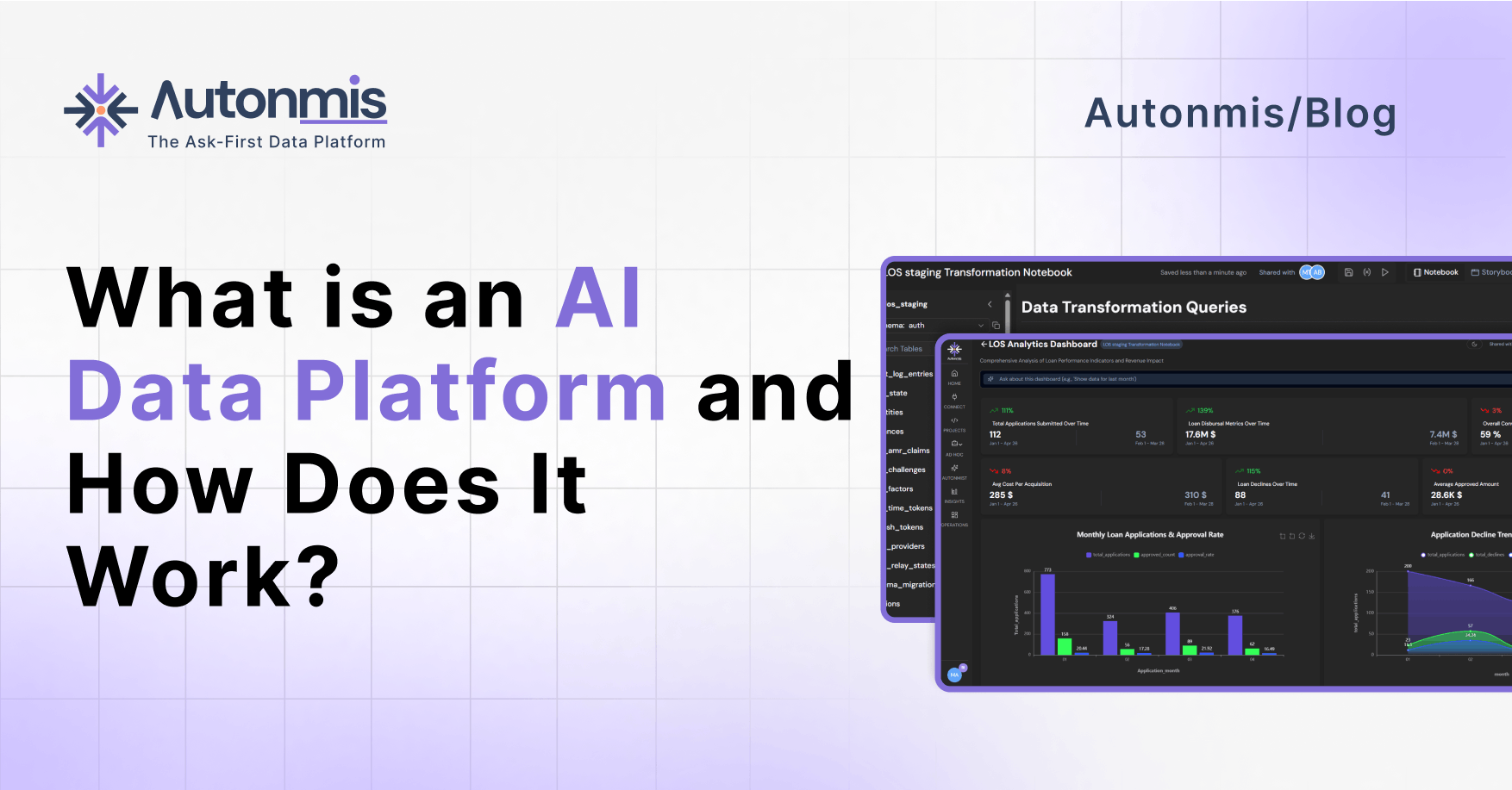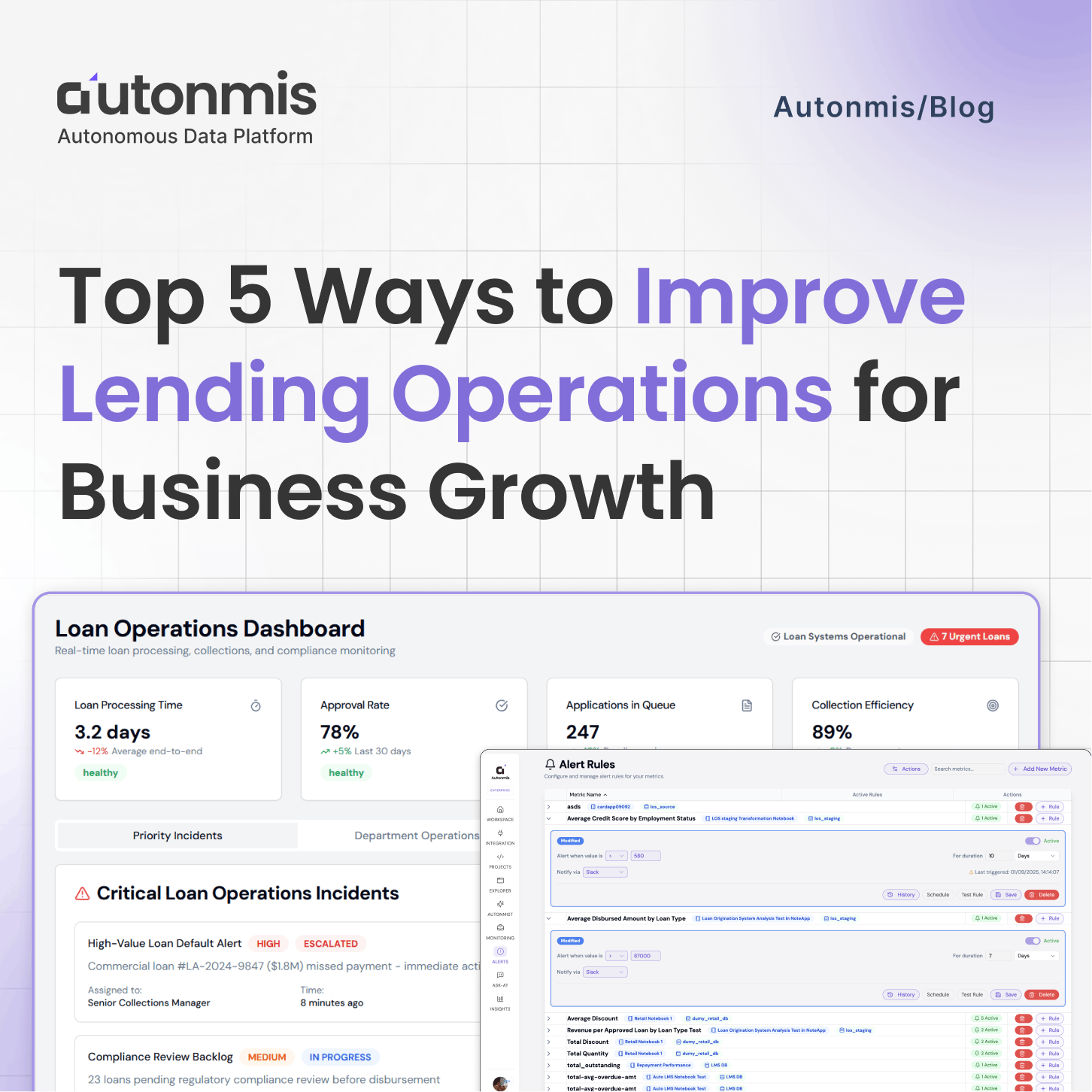Table of Contents
Loading table of contents...
What is an AI Data Platform and How Does It Work?
Uncover what is an AI Data Platform and how it enhances your data strategy. Explore its role in AI model development and the benefits for your organization.
May 9, 2025

AB

You're steering your organization's data strategy, and "AI" is no longer just a buzzword - it's a strategic imperative. But you also know that even the most sophisticated algorithms are only as good as the data they're fed. That's where the conversation shifts from if AI, to how AI, and increasingly, to the foundational infrastructure that makes it all possible: the AI Data Platform.
Many organizations have data platforms, data lakes, or data warehouses. So, what is an AI data platform, how is it different? And most importantly, how does it work to really accelerate your AI initiatives from ambitious concepts to tangible business value?
Let's dive in.
What is an AI Data Platform? More Than Just a Data Repository
At its core, an AI Data Platform is a specialized, integrated technology architecture designed to support the end-to-end lifecycle of AI and Machine Learning (ML) model development and deployment.
Think of it less as a static warehouse and more as a dynamic, intelligent workbench or even the central nervous system for your AI operations. While traditional data platforms focus on storing and managing large volumes of data for analytics and business intelligence, an AI Data Platform is purpose-built to handle the unique, demanding, and iterative requirements of AI.
This includes:
- Ingesting diverse data types (structured, unstructured, semi-structured) at scale.
- Preparing, cleansing, and transforming data specifically for AI model training.
- Facilitating experimentation and rapid iteration of ML models.
- Managing the entire MLOps (Machine Learning Operations) lifecycle, from development to deployment and monitoring.
- Ensuring robust data governance, security, and lineage crucial for trustworthy AI.
The key differentiator? It's designed for the velocity, variety, and volume of data and the iterative, compute-intensive processes inherent in AI development.
Why Your Organization Can't Afford to Ignore AI Data Platforms
For senior data professionals, the "why" often boils down to overcoming critical bottlenecks and unlocking strategic advantages. An AI Data Platform directly addresses common pain points:
- Breaking Down Data Silos: AI thrives on diverse datasets. These platforms provide a unified view, making it easier to access and combine data from various sources.
- Accelerating Time-to-Market for AI Solutions: By streamlining data preparation, model training, and deployment, you can significantly reduce the AI development lifecycle. (Remember the "80% of time spent on data prep" statistic? This aims to crush that.)
- Enhancing Model Performance and Accuracy: Better data quality, feature engineering capabilities, and robust experimentation tools lead to more reliable and impactful AI models.
- Enabling Scalability and Agility: As your AI initiatives grow, the platform needs to scale seamlessly—both in terms of data volume and computational resources. Cloud-native AI Data Platforms excel here.
- Ensuring Governance and Compliance: With AI making critical decisions, data lineage, auditability, and bias detection are paramount. An AI Data Platform embeds these governance principles.
- Improving Collaboration: It provides a common ground for data scientists, data engineers, ML engineers, and business stakeholders to collaborate effectively.
Checkout: The Rise of Generative BI Platforms: What It Means for Data Teams
How Does an AI Data Platform Work? The Engine Room Explained
Alright, let's get into the mechanics. While specific implementations vary, a comprehensive AI-powered data platform typically integrates several key functional layers or components working in concert:
- Data Ingestion & Integration:
- What it is: The entry point for all data. This layer connects to diverse sources – databases, APIs, streaming platforms (like Kafka), data lakes, IoT devices, and even unstructured sources like text documents or images.
- How it works for AI: It’s not just about bulk loading. It needs to handle real-time streams for live predictions, batch loads for model training, and connectors for a myriad of SaaS applications. Robust ETL/ELT capabilities are essential here.
- Example: Pulling customer interaction data from a CRM, product usage logs from an application database, and social media sentiment streams.
- Data Storage & Management:
- What it is: A scalable and flexible storage solution that can accommodate various data formats and access patterns. This often involves a multi-tiered approach (e.g., data lake for raw data, data warehouse for structured data, specialized databases for feature stores).
- How it works for AI: Must support efficient storage and retrieval of massive datasets for training. Think petabyte-scale. It also underpins versioning for data and models, crucial for reproducibility. Key Tech Buzzwords: Data Lakes (e.g., AWS S3, Azure Data Lake Storage, Google Cloud Storage), Data Warehouses (e.g., Snowflake, BigQuery, Redshift), Feature Stores.
- Data Processing & Transformation (The "AI Prep" Zone):
- What it is: This is where raw data is refined into AI-ready data. It involves cleaning, deduplication, normalization, and critically, feature engineering.
- How it works for AI: Feature engineering is the art and science of creating new input variables (features) from existing data that make ML algorithms work better. This layer needs powerful processing engines (like Apache Spark) and tools that allow data scientists to easily craft and test features.
- Example (Conceptual Python Snippet):
- AI/ML Model Development & Experimentation:
- What it is: An integrated environment (often based on Jupyter notebooks or specialized IDEs) where data scientists can explore data, build, train, and evaluate ML models.
- How it works for AI: Provides access to popular ML libraries (Scikit-learn, TensorFlow, PyTorch), distributed training capabilities, experiment tracking (e.g., MLflow, Weights & Biases), and hyperparameter optimization tools. Collaboration features are key.
- MLOps - Deployment, Monitoring & Management:
- What it is: The operationa l backbone for deploying, managing, and monitoring ML models in production. This is where AI moves from experiment to business-as-usual.
- How it works for AI: Encompasses model versioning, CI/CD for ML (Continuous Integration/Continuous Delivery/Continuous Training), automated retraining pipelines, model performance monitoring (drift detection, accuracy degradation), and A/B testing for models.
- Why it’s critical: Models degrade. Data distributions change. MLOps ensures your AI investments continue to deliver value reliably and responsibly.
- Data Governance, Security & Observability:
- What it is: A foundational layer that ensures data quality, security, privacy, and compliance across the platform. Observability provides insights into the health and performance of data pipelines and AI models.
- How it works for AI: Implements access controls, data encryption, data lineage tracking (to understand where data came from and how it was transformed), audit trails, and tools for bias detection and explainability (XAI). Data observability tools monitor data freshness, volume, schema, and quality, alerting teams to issues before they impact AI models. Think: GDPR, CCPA, and industry-specific regulations, plus the ethical considerations of AI.
Checkout: The Rise of Generative BI Platforms: What It Means for Data Teams
Key Characteristics of a Modern AI-powered data platform
When evaluating or designing an AI Data Platform, look for these attributes:
- Scalability & Elasticity: Effortlessly scales compute and storage up or down based on demand.
- Flexibility & Extensibility: Supports various data types, AI frameworks, and integrates with your existing ecosystem.
- Automation: Automates repetitive tasks in data pipelines, model training, and deployment.
- Collaboration: Enables seamless teamwork between diverse data roles.
- Unified Experience: Provides a consistent interface and toolset across the AI lifecycle.
- Governance-first Design: Builds in security, compliance, and ethical considerations from the ground up.
- Cost-Effectiveness: Optimizes resource utilization to manage TCO.
Building vs. Buying: A Strategic Consideration
A quick note: organizations face the classic "build vs. buy" decision. Building a comprehensive modern data stack from scratch is a significant undertaking, requiring specialized expertise and ongoing maintenance.
Alternatively, leveraging managed cloud services or specialized vendor platforms (like Autonmis, which operates in this intelligent automation and data sphere) can accelerate deployment and reduce operational overhead.
The right choice depends on your organization's resources, expertise, and strategic priorities.
The Future is Unified and Intelligent
The AI Data Platform isn't just a current trend; it's the bedrock for future AI innovation. As AI becomes more pervasive, expect these platforms to become even more integrated, intelligent (using AI to optimize the platform itself), and crucial for unlocking complex use cases like real-time personalization, advanced anomaly detection, and trustworthy Generative AI applications.
For data leaders, understanding and strategically investing in the right AI data infrastructure is no longer optional. It's the key to transforming your organization's data into its most valuable asset and staying ahead in an AI-driven world.
Intrigued by how a modern AI Data Platform can transform your workflows? Discover how Autonmis leverages AI and conversational interfaces to make data work simpler.
Ready to simplify your AI data infrastructure? Explore how Autonmis provides a unified platform for your entire data journey. Learn more.
Recommended Blogs

10/17/2025

AB
How GFF 2025 Changes the Way BFSI Will Operate in India

10/13/2025

AB
Top 5 Ways to Improve Lending Operations for Business Growth
Actionable Operational Excellence
Autonmis helps modern teams own their entire operations and data workflow — fast, simple, and cost-effective.